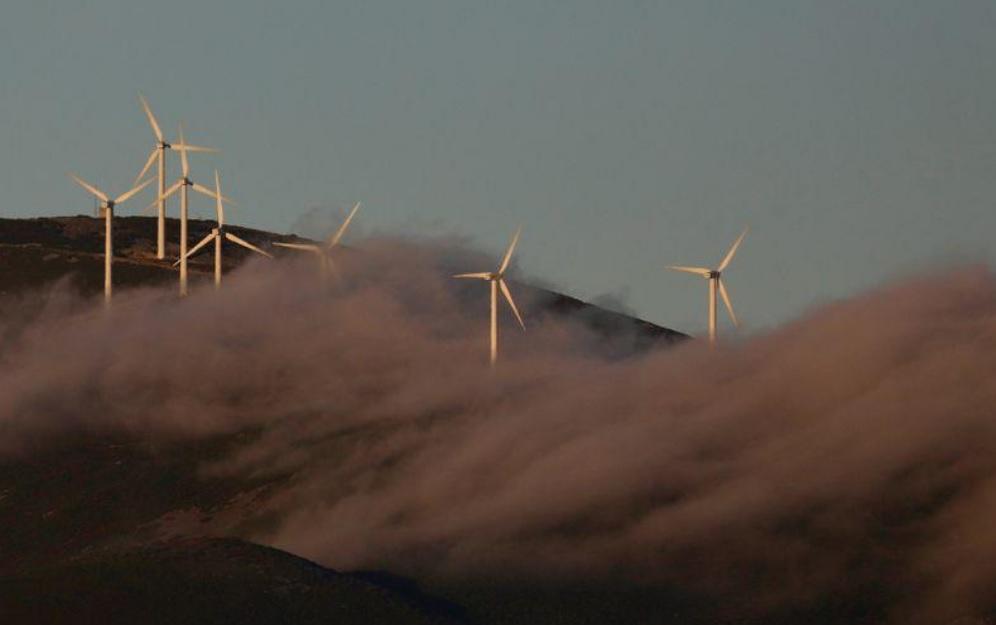
Wind turbines used to generate electricity are seen in El Palo summit, near Pola de Allande, Spain, on Aug. 11, 2017. (REUTERS File Photo)
Global energy-related emissions of heat-trapping carbon dioxide remained steady last year, with declines in the advanced economies balancing out a rise in the rest of the world, latest data has shown.
The International Energy Agency said emissions of the main man-made greenhouse gas stayed at 33 gigatons in 2019, even as the world economy grew by 2.9 percent.
“This was primarily due to declining emissions from electricity generation in advanced economies, thanks to the expanding role of renewable sources, mainly wind and solar, fuel switching from coal to natural gas, and higher nuclear power generation,” the Paris-based agency said.
“Other factors included milder weather in several countries, and slower economic growth in some emerging markets,” it added.
The country with the biggest drop in energy-related CO2 emissions was the United States, which recorded a fall of 2.9 percent to 4.8 gigatons on the back of coal-fired power plant closures and lower demand for electricity.
The European Union saw its emissions fall by 5 percent to 2.9 gigatons, while Japan’s dropped 4.3 percent to just over 1 gigaton in 2019.
Overall, developed nations saw their emissions fall 370 million tons with a 3.2 percent decline annually.
By contrast, emissions in the rest of the world rose by almost 400 million tons last year, led by higher coal use in Asia despite slowing growth in major emitters China and India.
“We now need to work hard to make sure that 2019 is remembered as a definitive peak in global emissions, not just another pause in growth,” said IEA Executive Director Fatih Birol.
“We have the energy technologies to do this, and we have to make use of them all,” the Turkish economist and energy expert added.
The Paris climate deal calls on nations to slash emissions to limit global temperature rises to “well below” two degrees Celsius above pre-industrial levels.
The landmark 2015 accord also enjoins governments to aim for a lower temperature cap of 1.5C.
Flagship report in June
The United Nations says that global emissions must fall by more than 7.6 percent annually through 2030 to keep 1.5C in play.
“It is evident that clean energy transitions are underway and it’s also a signal that we have the opportunity to meaningfully move the needle on emissions through more ambitious policies and investments,” Birol noted.
To support these objectives, the IEA will publish a World Energy Outlook Special Report in June that will map out how to cut global energy-related carbon emissions by one-third by 2030 and put the world on track for longer-term climate goals.
One of the most comprehensive scientific studies on carbon emissions had predicted a total of nearly 37 gigatons of human-made greenhouse gas emissions during 2019.
Global Carbon Budget, released at the U.N. climate summit (COP25) in Madrid on Dec. 4, 2019, showed Turkey ranking 15th in carbon emissions in 2018 with about 430 million tons of CO2.